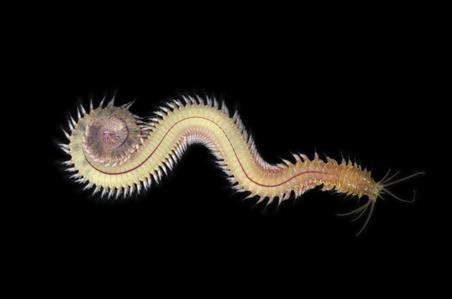General Description
In members of this genus the pharynx has very fine paragnaths in distnictive comb-like rows. Although a compound microscope is required, there are also long-bladed chaetae with a distinctive ball-and-socket articulation and a terminal tendon present in the dorsal bundle of chaetae on most segments starting at about segment 15-20 (these are referred to as "homogomph falcigers" in technical diagnoses). This species can be distinguished in southern waters by knowing that Platynereis antipoda is the only known species. It is quickly recognised from other Nereididae species that may be in the same samples by the distinctly short and stubby appearance of the first 4 pairs of parapodia (feet); this is especially evident when viewed ventrally. The tentacular cirri also tend to be much longer than in other local Nereididae. Body up to about 6-8 cm long.
Biology
This is one of the most common polychaete species in shallow reef areas in southern Australia. It seems able to adopt the colour of the substrate it lives on: when living among green algae it is frequently green in pigment while specimens collected from red algae will usually be red.
Habitat
Rock and seagrass areas, wherever algae are present; intertidal to depth of about 20 m.
Reefs
Seagrass meadows
Coastal shores
Distribution guide
South-eastern Australia, or south-western Australia, or north-eastern Australia, or north-western Australia.
Species Group
Depth
Shore (0-1 m)
Shallow (1-30 m)
Water Column
Max Size
8 cm
Commercial Species
No
Species Code
MoV 4234
Identify
Conservation Status
- DSE Advisory List : Not listed
- EPBC Act 1999 : Not listed
- IUCN Red List : Not listed




